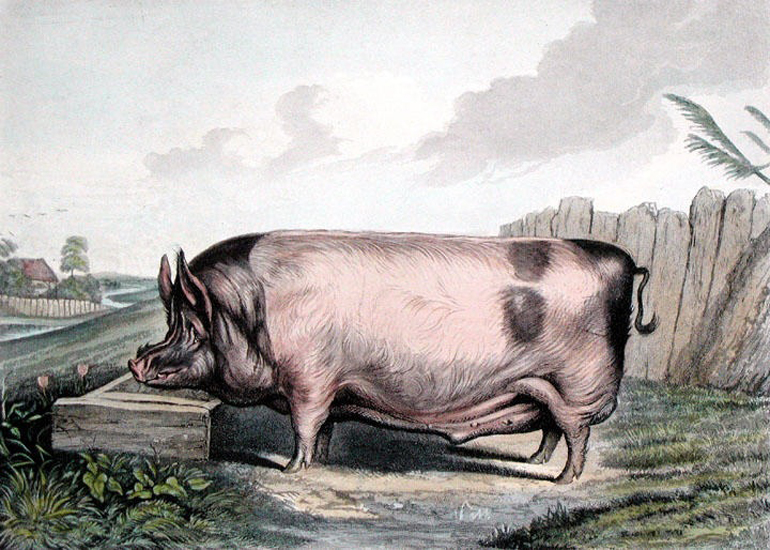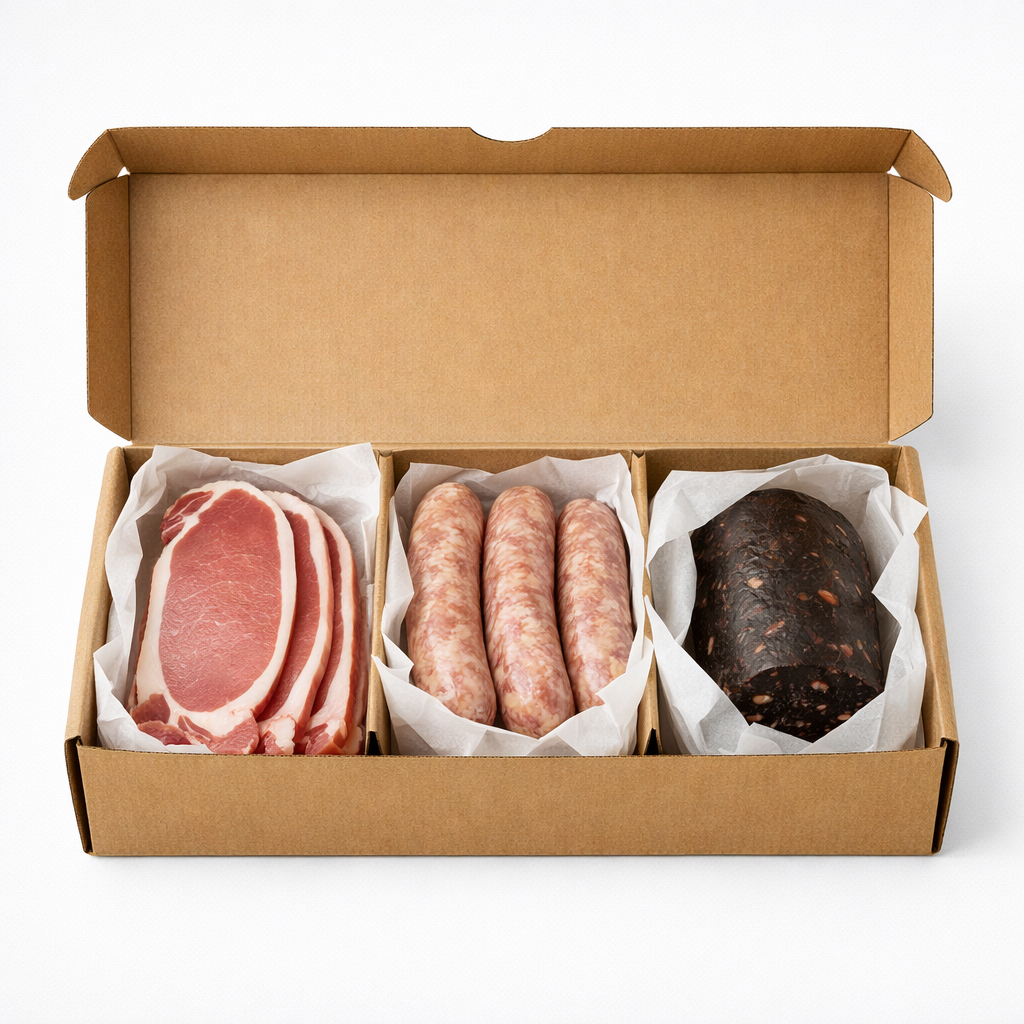
Great Britain is a historic sausage eating country, with more than 400 different kinds of sausage produced nationally. The British consume millions of sausages every day and we even raise special kinds of pigs to produce the right kind of pork. When not eating an English breakfast, the British love to eat sausages, or bangers, using them as ingredients in dishes like bangers & mash, battered sausage (sold in fish and chip shops) and sausage rolls (sold in bakers everywhere).
The definitive reference book on the traditional English breakfast.
View the HandbookNobody really knows, the etymology of the word is ages old and deep. The word sausage seems to have originally derived from the Latin word ‘salsisium’, meaning something that has been salted, it later evolved into the vulgar Latin word ‘salsicia’, and the Anglo-Norman ‘sauseche’, which later evolved into the Middle English ‘sausige’, before becoming the word sausage we know today. The first real reference to the sausage in English literature came from the firfteenth century word ‘salcicia’, described and pronounced coloqially as a ‘sawsage’.
Sausages have existed for thousands of years across different cultures, the famous Greek poet and author Homer wrote about blood sausage in the Odyssey, Epicharmus once wrote a comedy titled The Sausage, and Aristophanes' play The Knights is about a sausage vendor who is elected leader. Arguably, the Romans brought the first sausages to the British Isles during their conquest in 400 AD, ancient records suggest that the Britain based Romans and the natives both really liked the Luganega and the Lucanian variety of Roman sausage.
Ever since then, four thousands of years, we have been making and producing our own homegrown variants of the humble pork sausage, some of which gradually became traditional over the subsequent centuries, giving us the now famous, and traditional, British sausage varieties. Different regions prepare their sausages in different ways, using different herbs and spices, Lincolnshire flavors their sausages with fresh sage, but Cheshire sausages are notable for being flavored with caraway and coriander
As with most other kinds of sausage, British sausages are traditionally made of pork and different herbs and spices, mixed according to ancient recipes, passed down through the ages. Traditional sausage recipes are still a closely guarded secret and it is these recipes which give the British such a huge variety of sausages to choose from. Some of the most famous kinds of British sausage are specific to a region and Great Britain has a number of historic sausage producing regions, such as Cumberland, Lincolnshire, Yorkshire in England and Glamorgan in Wales.
Perhaps the most famous of British sausages is the Cumberland sausage, which has been a local speciality in the County of Cumberland for more than 500 years. The Cumberland sausage has a distinct taste because of the meat being chopped rather than minced, giving it a meaty texture.
The Cumberland sausage is such a treasure of the British sausage producing industry that the traditional Cumberland sausage was granted Protected Geographical Indication (PGI) status in 2011, helping protect its heritage and authenticity in a world of fake sausages from overseas.
Lincolnshire is another historic sausage producing region and the Lincolnshire sausage recipe is dominated by sage, with meat coarsely ground, producing a lovely chunky texture. Every year the city of Lincoln holds a competition to see who can make the best Lincolnshire sausage. The Linconshire sausage als holds European Protected designation of origin (PDO) status for their sausages so that they can be made only in the specific region and must be made to a specific quality and recipe in the old traditional way. The Linconlnshire sausage also holds European Protected designation of origin (PDO) status meaning that they can be made only in the specific region and must be made to a specific quality and recipe in the old traditional way.
There are lots of other and less well known British regions which have historically produced sausages and the English breakfast connoisseur can take this as an opportunity to inject variety into the traditional full English breakfast by varying these different ingredients. Seek out and try a Manchester sausage with its wonderful nutmeg and ginger taste, or an Oxford sausage containing lemon pork and veal, a slightly more refined sausage experience and firm favourite of the dining halls at Oxford University. Or perhaps try the Marlybone sausage, a traditional Hertford butchers sausage, flavoured with mace and ginger, but if you happen to be a vegetarian try the Glamorgan sausage, a traditional Welsh vegetarian sausage, made of cheese, leeks and bread crumbs.

Outside the United Kingdom, sausages made to the traditional English style can be difficult to obtain. Differences in meat ratios, rusk content, and seasoning mean that most American sausages marketed as British are, in practice, a different product.
For this reason, the English Breakfast Society issues a limited batch English Breakfast Box in the United States, containing the core components of a traditional English breakfast prepared to the recognised standard.
In the British Isles we have eleven native pig breeds, all of which are traiditionally used to produce wonderfully different tasting meat depending on where the breed is from and what it traditionally grazes upon. We have long bred specific breeds specifically to make sausages, some of the more historic British pig breeds include the Tamowrth, which typically grazes upon acorns in woodlands and which is famous for its fine tasting meat. The Gloucester Old Spot is another legendary pig breed, one whoch has gained European Commission Traditional Speciality Guaranteed (TSG) status for its meat under the name 'traditionally farmed Gloucestershire old spots pork'.
The Oxford Sandy and Black is one of my favorites, they graze in apple orchards and are the source of the famous Oxford sausage variety, famous for the succulent bacon and sausages its meat produces. Sadly all of these historic native British pig breeds are classified as rare and endangered by the Rare Breeds Survival Trust who work with farmers to preserve trandtional British sausage pig breeds.
Page updated on Thursday 15th Jan 2026
This site is independently run. Reader funding helps keep standards high.